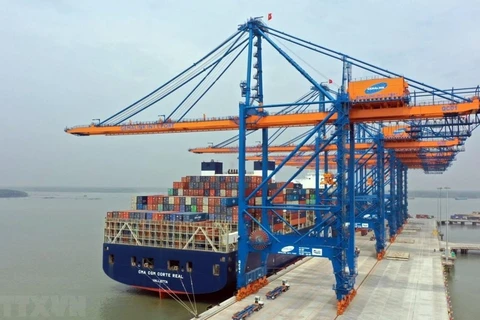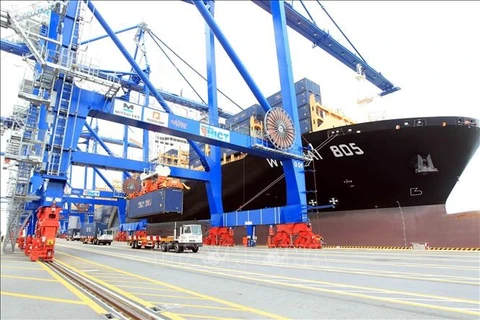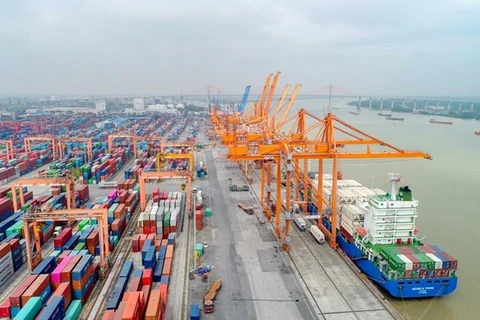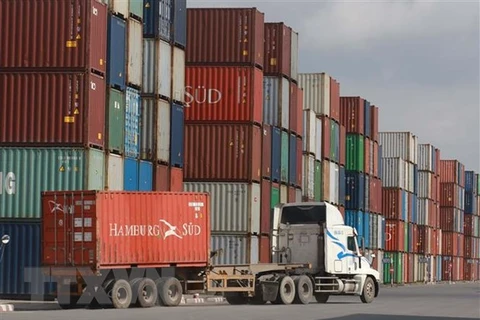Hanoi (VNA) – Seaports in the central province of Quang Nam have recorded a surge in the volume of handled cargo in recent years, and are expected to make new breakthroughs.
Despite the impacts of the COVID-19 pandemic, the throughput at local seaports still met the target of over 2.5 million tonnes in 2021.
The figure topped 702,820 tonnes in the first three months of 2022, including 144,050 tonnes of exports, 86,847 tonnes of imports, and 471,923 tonnes of domestic cargo, according to Director of the Quang Nam Maritime Port Authority Truong Hoan Lac.
He said with the production and throughput growth, especially the soaring volume of exports and imports via seaports in the Chu Lai Open Economic Zone, the cargo handled at seaports in the province is predicted to surpass 4 million tonnes this year and reach 13 - 16 million tonnes by 2030.
Quang Nam boasts many advantages thanks to connections by air, road, railway and sea, while transport infrastructure is relatively comprehensive. The task now is to tap into the local potential to develop seaports, Lac noted.
A representative of the Vietnam Maritime Administration said with an over-100km-long coast, Quang Nam was identified by the Ministry of Transport as an important seaport centre in the central region. Established in 2011, the Quang Nam Maritime Port Authority has been continually making reforms, improving efficiency and effectiveness of its governance, and creating optimal conditions for seaport activities to become a key part of the service sector.
Lac went on to say that the authority is working to apply online public services at Level 3 and 4, the highest levels, for most administrative procedures for vessels arriving at and leaving the local seaports.
The time needed for handling procedures has been shortened from one hour to 15-30 minutes, while 98 percent of the procedures are handled electronically, thereby creating a favourable and transparent environment for enterprises. This has given an impulse to maritime activities and won over maritime transportation companies, thus helping improve the competitiveness of local seaports, the official added.
In the planning scheme on the development of Vietnam’s seaport system by 2020 with a vision to 2030, Chu Lai Port in the Chu Lai Open Economic Zone is one of 15 of its kind nationwide to be developed from a second-tier seaport (which means a local integrated seaport) into a first-tier one (a national port that serves as a regional gateway).
To do that, the Quang Nam People’s Committee approved a plan on the Chu Lai Port’s development which aims to turn the facility into a centre of domestic and international transport and trade in the central and Central Highlands regions, and a gateway to the East Sea of the Central Highlands, southern Laos, northeastern Cambodia, and Thailand./.


























